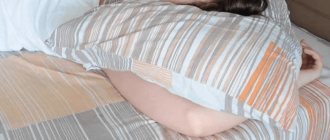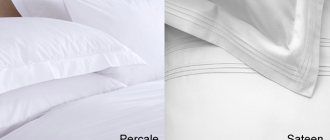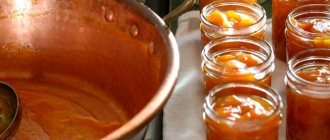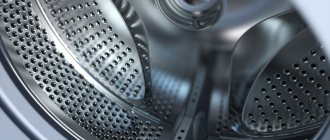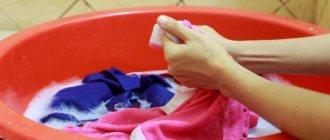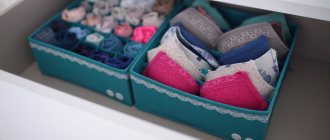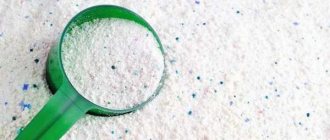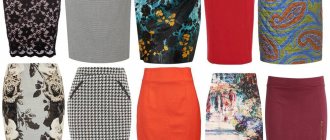Nowadays, the market offers a wide range of fabrics made from natural cotton: satin, calico, chintz and others. The materials are in great demand due to their hygiene, wear resistance and strength. At times it is very difficult to understand this diversity and understand, for example, what is better - percale or poplin.
The difficulty lies in the fact that these fabrics are similar in basic properties, and it is sometimes difficult for the average consumer to understand how they differ from each other.
Description of fabrics
Before moving on to the question of what is better to choose, percale or poplin, you should understand the basic properties of these materials.
Percale fabric first appeared in India, and literally translated from Persian the word means “rag”. The canvas consists of natural cotton fibers, which are combed using a certain technology and then used to create the material.
Percale has a plain weave and is highly durable, which is why some types of this fabric were used in the past to make ship sails. Finer types of material were intended to create clothing and bedding.
Poplin has been known since the 14th century, and in Italian the word means “papal”. The material received such an unusual name because it was first manufactured in Avignon, where the residence of the Pope was located. In those days, this material was made from silk, one side of it was one color, and the other was covered with patterns.
Today, poplin is produced by plain weaving using cotton or synthetic fibers and using threads of various thicknesses. Due to this, the surface of the canvas is covered with small scars. Men's and women's clothing, curtains, towels and tablecloths are made from this fabric.
There are types of material that contain wool or silk fibers. As a rule, these types of poplin are used when sewing high-quality bed linen.
Advice
Since synthetic fibers can also be used in the production of these materials, before purchasing an item made of percale or poplin fabric, you should carefully study the label.
Fabric selection depending on application
Not only sleep accessories are sewn from the three materials. Severe calico is used for rough upholstery of furniture. Robes, dresses and household and kitchen textiles are sewn from printed fabric.
Poplin is used for sewing wardrobe items; in addition, the fabric has gained wide popularity among modern needlewomen. It is used in sewing soft toys, jewelry, scrapbooking, patchwork, and for appliques.
Percale was originally invented for technical needs. Sails, parachutes are sewn from it, and aircraft hulls are sheathed. Bathrobes, pajamas, blouses, and dresses are made from household items.
Advantages and disadvantages of fabrics
Like any type of material, percale and poplin fabrics have a list of advantages and disadvantages.
The main positive properties of percale include the following characteristics.
- Long service life. This material is considered the most wear-resistant among cotton fabrics; percale items will last at least 7-8 years.
- High density - 130-150 g/m2, which exceeds similar characteristics of other cotton fabrics.
- Strength. Even after numerous washings, cleanings and ironing, percale fabric retains its original density and brightness of colors.
- Ability to maintain shape and structure. This fabric is not prone to deformation and the formation of pills on the surface.
- Softness and smoothness. Untwisted cotton fibers are used as the base for this material, which makes the surface appear slippery.
- Ability to maintain temperature. Products made from percale will not allow you to freeze in cold weather, and on hot days they will provide a pleasant cooling effect.
The disadvantages of this material include the fact that it is very wrinkled. After washing, such a bedding set will require mandatory ironing and steaming.
The positive qualities of poplin are the following properties.
- High strength. Items made from this fabric are considered durable; the fabric does not “wipe” even with intensive use of the product for 4-5 years.
- Hygienic and breathable. The fabric allows the body to breathe and allows air to pass through perfectly.
- Ability to retain heat. Natural poplin fibers will reliably protect you from the cold and prevent you from freezing.
- Hypoallergenic. Products made from this fabric can be used by people with increased sensitivity.
- Easy to care for. This material does not require the use of any special means in order to keep it in good shape for a long time.
- Softness and silkiness. Poplin is smooth and pleasant to the touch, which is especially valuable for bedding and clothing that is in direct contact with the body.
- Stability of deformation. The material practically does not wrinkle and is able to retain its original shape and color after many washes.
The disadvantage of poplin is that fabrics containing wool or silk impurities can shrink greatly after washing.
Characteristics of two materials
Percale is a dense, smooth, strong cotton material. Along with ranfors, calico and satin, it is often found on bed linen labels. Made from combed, unspun, long-staple cotton. Before spinning, the threads are treated with sizing - a strengthening and adhesive composition made from glycerin, starch, and fats.
Poplin is also a natural cotton fabric. When making it, a special type of weaving is used, with scars. The weft thread is 1.5-2 times thinner than the warp. Braiding thick threads with thin ones gives the fabric additional stability. It is strong, wear-resistant, durable.
Very rarely, both materials may contain synthetic fibers. Despite their density, they are thin, soft, and pleasant to the touch.
What is better for bed linen – percale or poplin?
We have figured out the basic properties of the fabric, it’s time to find out what is better for bed linen, poplin or percale. To do this, you will need to compare their main characteristics.
- Strength indicators. In the production of percale, denser threads treated with a special compound are used. This suggests that the strength of the material is slightly higher than that of poplin.
- Density. According to these characteristics, percale is superior to poplin fabric, which is visible to the naked eye. It is enough to look at the materials “against the light” and you will notice that the poplin is somewhat thinner.
- Duration of operation. Since poplin fabric is less dense, its service life is usually 3-4 years less.
- Wrinkleability. If you purchase a set of percale bed linen, you will have to iron it after each wash, otherwise the pillowcases and duvet covers will look untidy. But products made from poplin practically do not wrinkle, and, accordingly, do not need to be treated with heat and steam.
- Price. The difference in the price of these materials is quite noticeable. If poplin can be purchased for 1,500 rubles, then 1 m of percale costs more than 2,000 rubles.
What fabric to buy for sewing bed linen? The final choice depends on personal preference. If a poplin set will cost much less, but will not last a relatively long time, then for sheets, pillowcases and duvet covers made of percale you will have to pay a larger sum, but you can use the products for a long time.
Basic criteria for choosing fabric
What criteria do you consider priority when choosing bed linen? What do you lean towards - spectacular appearance or daily comfort, price or quality?
We spend a third of our lives sleeping, so choosing the right bedding is fundamentally important.
Naturalness and quality
All types of fabric discussed above, namely calico, satin, poplin and percale, are natural cotton environmentally friendly materials. They have valuable qualities: they allow air to pass through, absorb moisture, relieve static tension, do not provoke the proliferation of pathogenic bacteria, and do not cause allergies. The natural properties of cotton provide the necessary comfort and hygiene of linen, which makes it a safe and versatile solution for everyday use.
Before buying a ready-made set or fabric for sewing bed linen, be sure to read the label indicating the composition of the fabric
Which fabric is best for bed linen? Natural, of course. Although small admixtures of artificial materials even bring some benefits: they increase wear resistance, reduce creasing, and provide elasticity. But if the composition contains more than 75% synthetics, the fabric stops allowing air to pass through, creating a “greenhouse effect” in the bed and accumulating static electricity.
Now many manufacturers are reducing the cost of traditionally natural fabrics by adding synthetic fibers: polyester, nylon, viscose, microfiber, spandex, etc.
Care
According to this indicator, the best choice is poplin or satin, which wash well at low temperatures (30-40 ℃) and do not require careful ironing.
Ironing provides additional disinfection of bed linen
Calico and percale must be ironed to give these fabrics softness and smoothness. It is recommended to wash calico without bright printed patterns at a temperature of 40-60 ℃ and iron it with a hot iron before it has had time to dry completely.
Appearance and price
Satin and percale are considered the most aesthetic and “rich”, as they have a smooth surface texture with a noble shine. This directly affects their price, which can significantly exceed the cost of similar-sized calico sets. In terms of the ratio of appearance and cost of fabric, poplin is the optimal choice for many.
In any case, it is up to you to decide which fabric is best for bed linen. We hope that our article will help you make your choice.
Caring for natural fabrics
Since percale and poplin have similar properties, the principles of caring for products made from these materials are the same.
To keep the fabric in good shape longer, you will need to follow the following rules.
- Before using the bedding set, carefully study the product label, which describes the basic requirements for caring for the material.
- Before washing, keep poplin or percale items in a special basket with holes to provide air access to the fabric.
- Wash items made from natural fibers separately from other items at a water temperature not exceeding 80 degrees.
- Use washing and conditioning products suitable for this type of material.
- Dry items in the fresh air in a vertical or horizontal position. These materials are not afraid of sunlight, the paint does not fade, so you can hang them on the balcony even in clear and hot weather.
- Iron items only on the reverse side with the iron heated to no more than 150 degrees.
- Bed linen made from these fabrics should be stored in a ventilated closet in a dry and warm room.
By following these simple recommendations, you can significantly extend the life of products made from natural fabrics and not have to think about purchasing new bed linen for many years.
What choice should I make?
Which is better: percale or poplin bed linen? In terms of density, strength and service life, percale comes out on top. The fact is that all threads are treated with a special agent that makes the fibers elastic and resistant to various influences. As for percale, its only advantage compared to poplin will be its lower cost.
Bed linen made from a variety of materials from the world's best manufacturers is offered by the Ellina online store. The assortment is presented in the company’s catalogue, and you can ask any questions to a consultant by phone.
Comparing percale with poplin and satin
Percale, poplin and satin are cotton fabrics that have similarities and differences. All of them are quite popular and in demand when sewing bed linen.
The main difference between these fabrics is the type of weave of threads (satin weaving for satin, plain weaving using threads of different thicknesses for percale and poplin).
In addition, in the process of weaving satin, highly twisted threads are used, due to which the top layer of the fabric is smooth and slightly shiny.
Percale is superior in strength to both satin and poplin. In addition, this fabric is considered the most wear-resistant fabric of all the above.
The advantages of satin are its impeccable appearance, a large number of color options, a smooth surface to which dust and animal hair do not stick.
Poplin is favored by its low cost, good wear resistance and softness.
How to distinguish percale from calico?
Let's start with the fact that both percale and calico are made by simple plain weave of threads.
In the process of making calico, threads of the same thickness are used. The technology for making percale is somewhat different - the front threads are thin, treated with a special adhesive, and the back threads are thick.
You can distinguish calico from percale by touch - percale is smoother, silkier and more delicate. Calico is more loose. External differences are also noticeable to the naked eye - percale is characterized by a beautiful semi-matte shine, while calico looks more simple and prosaic.
The differences between satin and percale are less pronounced - both fabrics have a smooth and silky top layer, while percale is rougher and denser than satin.
Comparing calico with poplin and satin
Calico and poplin are budget options for fabrics for sewing bed linen. They have good strength properties, can withstand a large number of washes, and are easy to care for. At the same time, calico is a denser material than poplin and satin.
As for the cost of fabrics, calico and poplin cost about the same, but satin is an expensive luxury fabric that looks much more presentable and richer.
Sale of bed linen sets
Best prices for bulk purchases
View in the catalog
Which is easier to care for?
Both calico and percale do not require special care. This is because these are high quality cotton fabrics. However, percale can withstand much more washing than calico.
The rules for caring for these fabrics are simple:
- Wash at 40-60 degrees.
- Spin in the washing machine at 800 or 1000 rpm.
- Both calico and percale can be dried in the dryer.
- These fabrics can be ironed at a temperature of 150 degrees, slightly damp. If the material is completely dry, steam treatment can be used.
Products made from percale and calico do not shrink, so if necessary, plain-dyed or bleached products can be boiled.
It is worth saying that after numerous washes, percale becomes noticeably softer, but still not as soft as calico.
Fabrics by density
It is unlikely that buyers think about such quality as density when looking at new items in the store’s assortment. Meanwhile, density is important.
The highest density is terry - from 300 to 800 g/m². Also on the pedestal in terms of strength is microfiber - from 230 to 380 g/m². Slightly inferior to the “palm” are mako-satin (from 220 and above g/m²), jacquard (from 170 to 220 g/m²) and flannel (from 165 to 175 g/m²). In the “middle peasants” in terms of density - bamboo (120 g/m²), linen (125-150 g/m²), percale (100-170 g/m²), poplin (110-120 g/m²), calico (100-140 g/m²). Satin has a density from 85 to 170 g/m². Rounding out the “order” are calico (from 100 to 140 g/m²), silk (80-90 g/m²) and chintz (80-100 g/m²).
Which is better?
It is simply impossible to answer this question unambiguously. Each of us has our own concept of quality: some believe that a set of bed linen should, first of all, be beautiful, for some the main indicator is softness and tenderness, others like smoother and silkier linen.
Calico and percale are high-quality cotton fabrics. They are characterized by high wear resistance, excellent strength and good appearance.
If we put aside all the nuances and look at this issue objectively, we can conclude that percale, after all, is superior in quality to ordinary calico linen sets.
LiveInternetLiveInternet
Very often there is a situation when a buyer, entering a store, is surprised by the large variation in the cost of goods and is sincerely surprised: “But, why?”
This also applies to cotton (and not only) fabrics, as well as products made from them. With great pleasure I will tell you why.
To begin with, I will touch on the very basics, without going into global details.
Cotton fiber production
The first thing that affects the cost of future fabric is the quality and grade of the cotton box itself, from which cotton fiber is subsequently spun. Before you start working with the material, it is checked for quality, the length and thickness of the fibers, and the type of cotton are determined. All this is done in order to determine how to most rationally use raw materials and conduct the technological process. After evaluation and inspection, the spinning material is sent for processing. To ensure a certain stable quality of yarn, raw materials from different batches are mixed.
Impurities
In addition to cotton, the fiber may contain impurities that are added to the composition for various purposes, be it strength or elasticity. Nylon, spandex and other synthetic fibers are added. Their content in fabrics is minimal and is allowed by GOST, since in many cases fabrics only benefit from this. But this makes them cheaper.
Cotton spinning
Our natural fabrics, which have a huge number of names, are made from finished - processed and bleached fibers. When you wander between samples, without going into details about spinning techniques, it is very difficult to distinguish - why does calico cost so much, and some poplin is already more expensive? And satin is so expensive!
These fabrics differ in their weaving. Here are their main varieties.
Plain weaving
The simplest weave in which the warp and weft threads alternate. This weaving gives the fabric strength. With increased density, the stiffness of the fabric increases. The fabric is the same on both sides. However, even with the same weave, the fabrics feel different to the touch.
Assortment of fabrics
Cotton: calico, chintz, cambric, calico, flannel, voile, poplin, taffeta, marshmallow. Linen: trim, canvas, linen. Silk: various crepes (crepe de chine, crepe chiffon, crepe georgette, crepe marroquin) Woolen: cloth, some suit and dress fabrics. Others: homespun fabric.
Twill weave
Forms a characteristic scar running diagonally across the fabric - from bottom to top and from left to right. The angle of inclination depends on the thickness of the thread, the density of the warp and weft.
Assortment of fabrics: twill, semi-silk lining fabrics, semi-woolen fabrics on a cotton base. The main twill weave is used to produce semi-silk fabrics with a silk warp and a cotton weft; the weft twill weave is used to produce semi-woolen fabrics with a cotton warp and a wool weft.
Satin or satin weave
Forms a scar diagonally from right to left. The threads are very thin (only high-quality 100% cotton is used, most often Egyptian long-staple cotton). The weaving is very tight.
Range of fabrics:
Cotton: satin, eraser. Linen: kolomenok (satin weave). Silk: satin, crepe-satin, lining fabrics, liberty. Woolen: some drapes, beaver, flannel on a cotton basis. Others: corset fabrics.
Perhaps these are the main criteria for the quality of the canvas. Additionally, I would like to go into some types of fabrics that I actively use in my works.
Poplin
Fabric in the production of which the plain weave method is used. The peculiarity of this fabric is that small scars can be seen on its surface. They arise due to the fact that threads of different thicknesses are used. A thinner thread is chosen for the warp, and the thicker one is used for the weft. This method of weaving fabric was first developed in France in the Middle Ages. More precisely, this happened in the town of Avignon. Thanks to the above-mentioned features of poplin, it is quite pleasant and soft to the touch. In terms of density and strength, poplin is comparable to the fabric that is used for sewing workwear. The peculiarity of poplin is that it looks great in almost any color. If we talk about the production of poplin today, it can be noted that it can be bleached, variegated, printed or plain-dyed. Most often you can find poplin bed linen on sale. This bed linen is distinguished by the fact that it is not only durable, retains its shape and color well, but also has a pleasant soft surface of the fabric. Moreover, since bed linen is most often made from cotton fabrics, poplin is distinguished by the fact that it retains heat well, perfectly absorbs moisture and allows the body to breathe. All this is necessary to create a feeling of coziness and comfort. You can also see on sale night pajamas, men's shirts, women's dresses and many other products intended for everyday wear made from this fabric.
Photo: white and with a floral print - poplin. Light brown - percale. Dark brown - calico.
Calico
Composition: 100% cotton. On the Russian market they are presented mainly in widths of 150 cm and 220 cm. According to Russian state standards, calico is 100% cotton. “Calico” is the most famous, traditional fabric, fairly densely woven (made of thick threads) and without much shine. There are several varieties of it with a density from 50 to 130 threads/cm2: “universal”, “crepe”, “ranfors”, “luxury”, etc. The higher the density (and the thinner the thread), the higher the quality of the fabric. Bedding sets made from calico are very practical and quite cheap. However, if you compare it, for example, with satin, the thickening of the threads and the usual cross weaving are clearly visible in the structure of the material itself. Yes, calico is certainly cheaper than satin or silk, but it is quite high-quality bed linen for those who, by and large, are not so interested in the elegance and softness of the fabric. ATTENTION! According to the “guest standards”, or rather the specifications of China, Turkey, Pakistan, and so on, up to 15% of polyester thread is allowed. The fabric consequently becomes cheaper due to the price difference between cotton and polyester.
Satin
Satin (French satin, from Arabic zaytuni, from Zaytun - the ancient Arabic name of the Chinese harbor of Quanzhou, from where this fabric was exported) is a fabric of satin weave of cotton fiber threads. It has a smooth, silky front surface, on which weft threads predominate; quite dense and shiny; It is produced mainly plain-dyed, printed and bleached. Used for making dresses, men's shirts, and so on. Due to its qualities, satin is widely used for making bed linen. Satin is made from double-woven twisted cotton thread. It has long been noted that the more the thread is twisted, the brighter the shine. This is how gloss appeared - satin, reminiscent of silk. Satin linen is durable and can withstand a large number of washes - 300-400, and only after quite a long time does the material begin to fade a little. It is cheaper than silk, but more expensive than other cotton fabrics. It is used to make underwear of various designs for everyday use. Satin bedding is best suited for daily use, without losing its impeccable appearance and strength even after repeated washing.
Photo: black - satin. Gray - percale.
Percale
In Europe, percale was created in the 18th century specifically for the bedrooms of French royalty and is well known as luxury bed linen. Since then, this fabric has been a symbol of refined taste and true beauty. The secret of percale lies solely in the natural properties of the long-staple Egyptian cotton from which it is made. The fabric is extremely dense and extremely durable, while at the same time being soft and smooth to the touch. Percale is a thin, high-density cotton fabric with a plain weave. Long-fiber varieties of cotton are used in production, which ensures high consumer properties of the material. Percale is a very silky, soft fabric, reminiscent of cambric in appearance. Percale has a long service life and washes well.
As a conclusion
I will be glad if this article is useful to someone. Personally, the first time I went to a fabric store, I was very confused by the difference in cost between materials. Perhaps, at first glance, I could only distinguish fleece, because I had dealt with it before. I didn’t see the difference between calico and poplin, between percale and satin.
Having understood some of the subtleties (of which there are probably many more), I see:
Calico is quite loose, rough and the threads have a difference in thickness. It feels good when cutting the material.
It behaves poorly under the needle of the machine; it requires some skill so as not to pull the entire fabric together with the thread that landed directly on the needle. I have not yet dealt with higher quality calico. But, in combination with denser fabrics like poplin and percale, they look great. That fine line where a slight difference in texture gives a product its charm.
Poplin and percale are quite similar. Even when working with them, I probably only see the difference on the inside and feel it tactilely a little. Percale has a reverse side, while poplin is identical on both sides. Percale is smoother and denser. Having already cut out the parts, it’s scary to sew the percale on the wrong side, which is slightly different, but will be noticeable in the finished product. At least in color intensity and shine.
They behave well under the sewing machine needle. The threads do not pull the entire fabric together once they hit it. And after, the canvas successfully takes on its original appearance.
satin for the first time when I couldn’t find the desired black color among other fabrics. It is shiny and slightly slippery to the touch. Its price is justified, since it has a particularly amazing tactile sensation, looks expensive and solid. I am already set on purchasing jacquard satin (this is a method of producing fabric in which a pattern, similar to patterns on frozen glass, is created by changing the height of individual loops. There is no embossing or dyeing, only weaving, so this type of fabric can be considered the most natural and environmentally friendly. After washing, the jacquard forms a barely noticeable pile, which is very pleasant to the body).
But, like any other fabric, it has its drawbacks.
For all its strength and durability, it wrinkles a lot. I'm very glad that this is not a problem for the pillows, as the fabric on them is always slightly taut and does not wrinkle. But, newly purchased fabric must first be ironed before cutting.
The second problem is its statics. If you have fur-covered friends in your home, the pillow will collect it on itself. The fabrics listed above do not magnetize it that much. Therefore, if you liked working with satin so much, match it to the color of your cat or dog.
That's probably all. See you again!
Bed linen quality criteria
When planning to buy a bedding set, pay attention to the following:
- Quality. If the product is sloppy, threads are sticking out of the seams, it is also worth checking whether your palm is stained when it comes into contact with the material. If the paint remains, a bad dye was used.
- Tactile qualities. The fabric should be pleasant to the touch and not irritate the skin.
- Durability and practicality. At a minimum, the linen should serve flawlessly for at least six months. With careful use and compliance with washing rules, the set will be in use for at least two to five years.
If all these requirements are taken into account, the purchase will be a joy.
bed linen quality criteria
